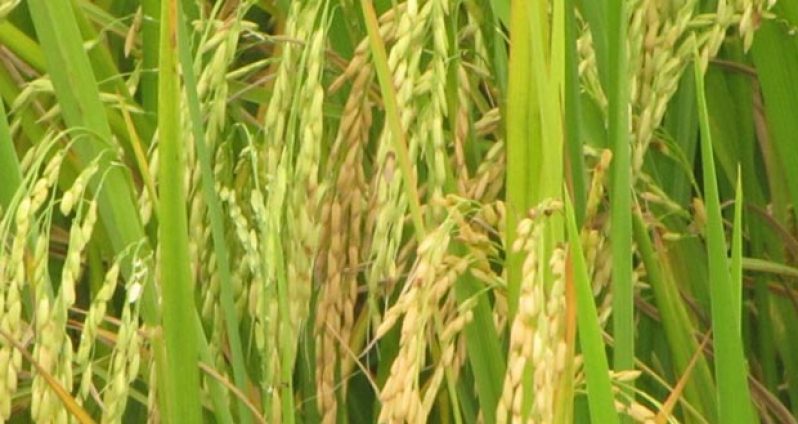…El Nino /La Nina forecast for 2014
HEAD of the Guyana Rice Producers’ Association (RPA), Mr Dharamkumar Seeraj, told the Guyana Chronicle that half of the first rice crop for 2014 has already been harvested.
He explained that in Region 2 (Pomeroon/Supenaam), some four per cent is to be harvested; in Region 3 (West Demerara/Essequibo Islands), 12 per cent of the crop is to be harvested; in Region 4(Demerara/Mahaica), harvesting is still to be completed in a few “scattered” acres; in Region 5 (Mahaica/Berbice), 20 per cent of the crop is to be harvested; and in Region 6 (East Berbice/ Corentyne) 15 per cent is to be harvested.
“Both the yield and quality are a little better than the last crop,” Seeraj said. “This crop, we have an average of 5.2 tonnes per hectare, which is about 35 bags per acre.”
He said the prevailing good weather conditions have contributed to the yield and quality. “We hope the weather holds, so at least by the end of the next two weeks we can complete our harvesting,” the RPA Head said.
Asked about challenges during the harvesting, Seeraj explained that there was a problem with the functioning of a bulldozer in Numbers 63 and 65 Villages in Region 6, and that affected works to improve the conditions of access dams to the rice fields.
However, he assured that this problem was being addressed.
The current crop is expected to end in mid-May, and the production targeted is some 260,000 tonnes. From that amount, the Venezuelan market will be serviced. The 2014 rice deal with the neighbouring country stipulates a shipment of 150,000 tonnes of paddy and 50,000 tonnes of rice, a total of 200,000 tonnes.
Last year, Venezuela took more rice than paddy, with a shipment of 80,000 tonnes of paddy and 120,000 tonnes of rice.
Seeraj said that between the first and second crops, the quota for Venezuela will be met, based on the shipping schedules.
NEXT CROP TROUBLE
The RPA Head also stated that land preparation for the next crop has been completed to an “advanced stage” in the areas where harvesting has been completed.
“After harvesting, the soil is more easily ploughed, so the farmers are looking at ensuring their land preparations are completed,” Seeraj said.
However, he cited the recent advisories over the possibility of El Nino and La Nina conditions, which, if not prepared for, can have devastating impacts on the rice sector.
He said advisories have been issued to farmers, urging efficient management of water resources.
The National Oceanographic and Atmospheric Administration (NOAA) has warned countries that the possibility of a severe El Nino phenomenon must be heeded.
Climatologists and weather forecasters are predicting an El Nino for the Americas, starting in July and intensifying towards October and December. The prediction speaks of the onset of a serious El Nino phenomenon, with severe droughts in many parts of the Americas.
Guyana has been, and continues to be, a victim of climate change, but has taken steps to adapt and to mitigate the phenomenon.
La Nina is above-average rainfall in an area for a particular period of time; is generally associated with drier places, and follows a period of El Nino.
Seeraj said works are also ongoing to ensure the effectiveness of the sector’s drainage and irrigation system during the next crop.
Some 40,000 people depend directly on the rice industry for their livelihood, and the industry provides employment for at least 20,000; while rice has also helped to secure Guyana’s status as a food-secure country.
Some $500M was allocated to the rice sector in the 2014 Budget.
The rice industry contributed about five percent of the Gross Domestic Product (GDP) in 2013, and accounted for more than US$240M in export earnings.
(By Vanessa Narine)




.jpg)










